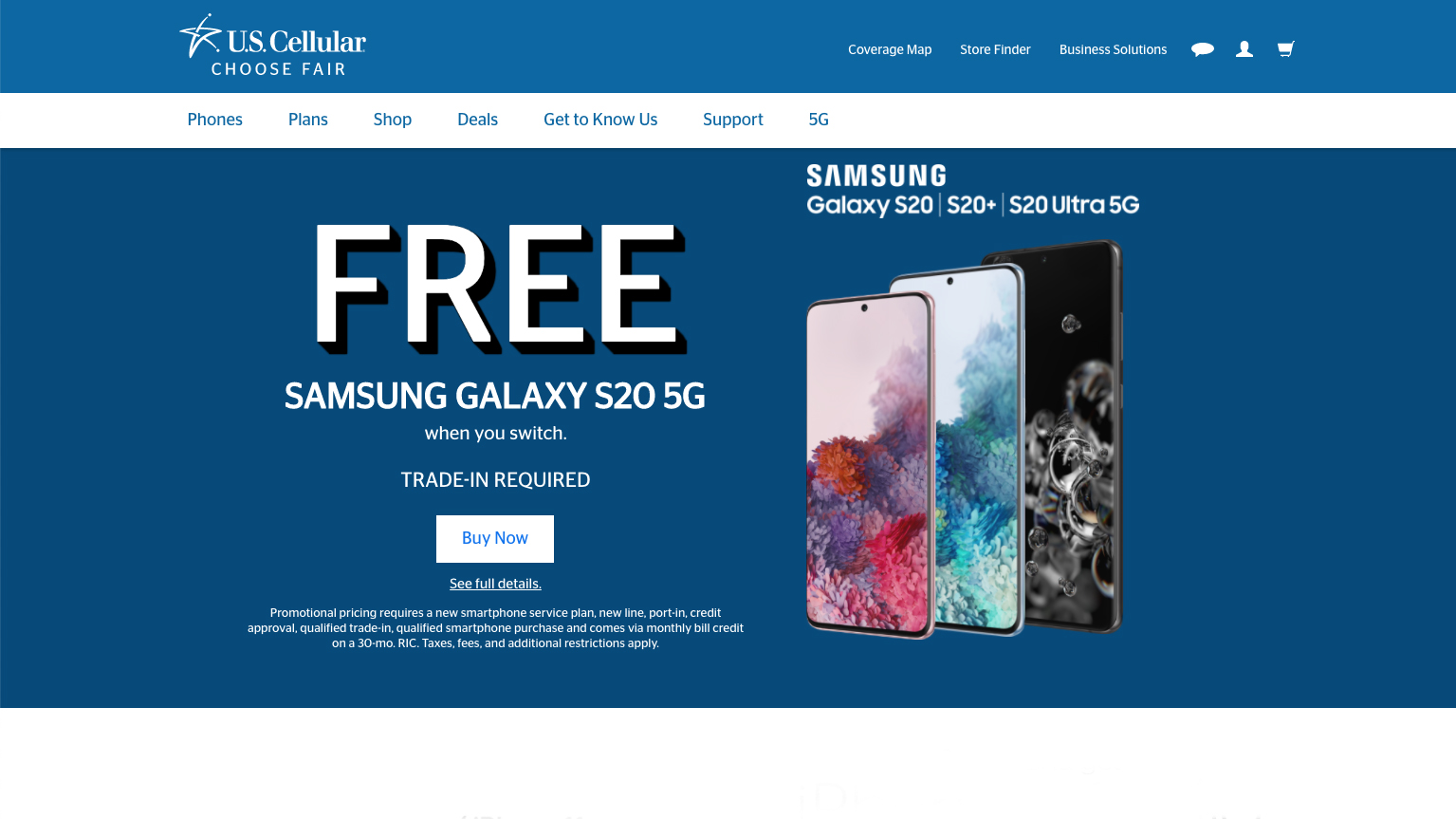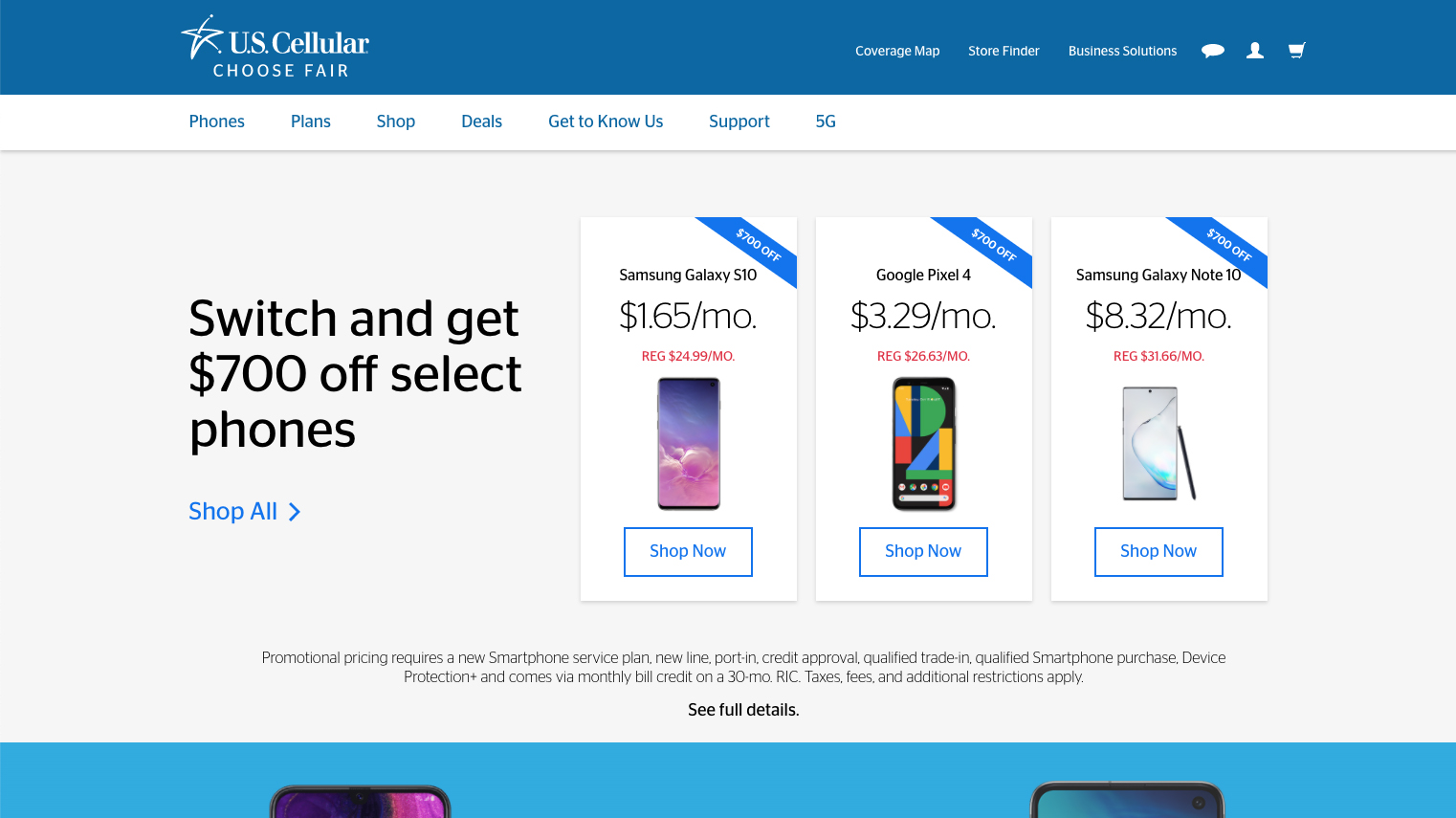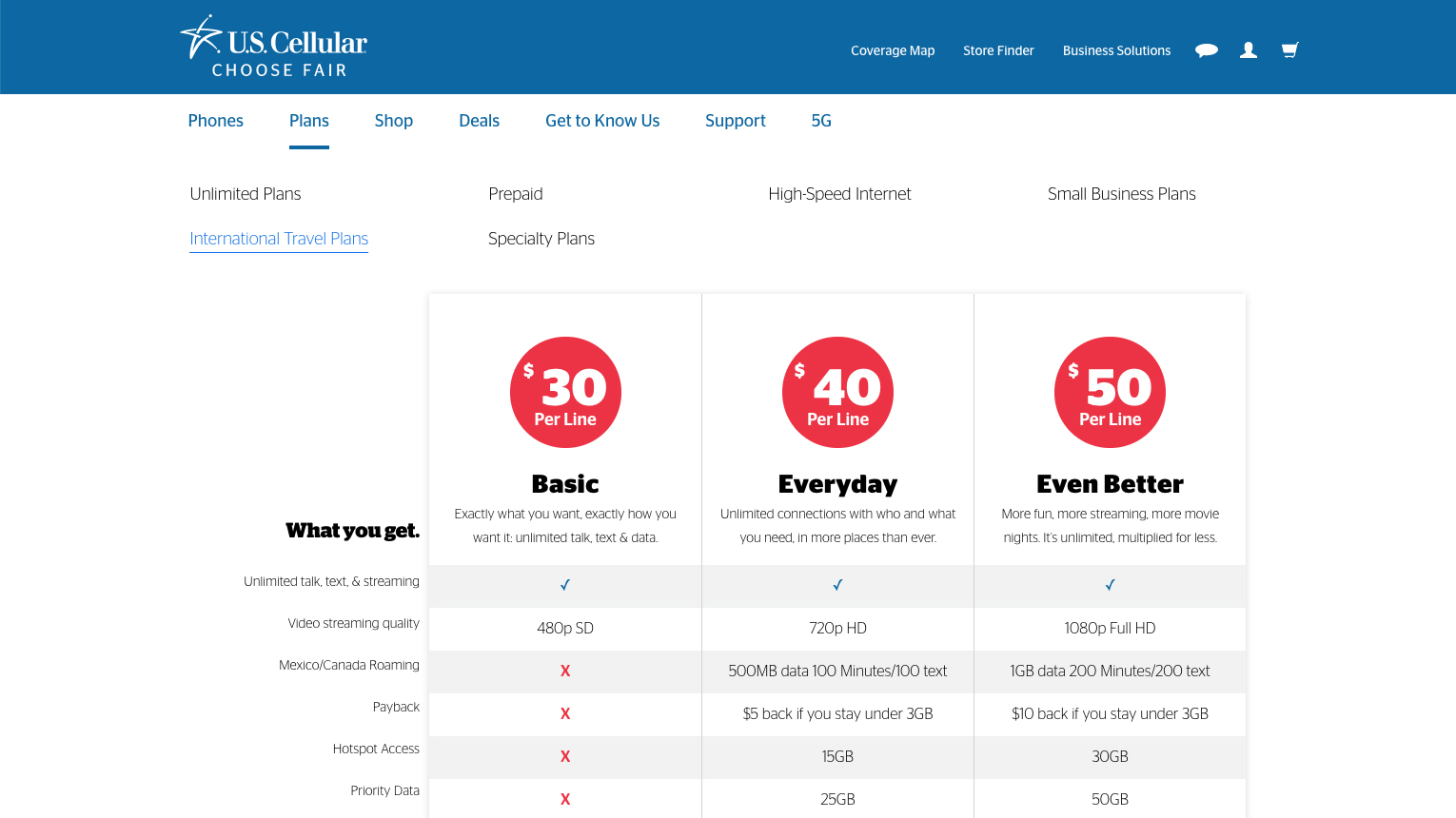Outside of the big four networks (AT&T, Sprint, T-Mobile and Verizon), U.S. Cellular is unique, as this cell phone provider has its own cellular network. That means it has its own cell towers and infrastructure to deliver voice and telephone services. The main downside is that the network isn’t particularly extensive, and moving outside of the company’s home ground in the Midwest and Pacific North West becomes quite restrictive making this a better network for those that don’t travel a lot.
U.S. Cellular review: Contract plans
- Prices from $60 a month
- Top end is $80 a month
All of U.S. Cellular’s contracts are sold on an initial two-year basis, making them some of the longest in the business. There are three plans to choose from, all including unlimited data: the main differences between plans are the features and restrictions. All plans include unlimited talk, text and data, and you can choose between one and four lines.
Starting at the bottom, the Basic plan costs $60 a month and misses out on priority data, so if you use your phone at a busy period, speeds may be affected. With this plan, video is restricted to 480p SD streaming.
Moving up, the $70 a month Everyday plan gives you 720p HD streaming, plus 500MB, 100-minutes and 100 text messages when visiting Canada and Mexico. You also get 15GB of mobile hotspot usage and 25GB per month of faster priority data; after this limit, speeds may be affected.
The top package is the $80 a month Even Better, which lets you stream video at 1080p, includes 1GB of data, 200 minutes and 200 texts when roaming in Mexico and Canada. This plan also allows you to use 30GB of hotspot data and includes 50GB of priority data.
Both the Everyday and Even Better plans have Payback included, which gets you $5 and $10 a month back per line respectively if you use less than 3GB of data per month. If you’re going to use less than 3GB of data, then you could get a better saving by picking a cell provider with lower limits making this somewhat a false economy.
U.S. Cellular review: Prepaid plans
- Prices from $40 a month
- Top end is $65 a month
If you don’t want a contract, U.S. Cellular has a selection of prepaid plans. There’s a Pay-As-You-Go-Data plan, which costs $30 a month base price and then you pay $0.03 per MB. As that works out at $30 per GB, this is really only a plan for people with minimal data requirements.
Move up to the 5GB plan and you get the same unlimited talk and text options, but you only pay $40 a month. Neither of these plans mentions video streaming, and you have to move up to the Unlimited plan ($55 a month) to get SD video streaming.
At the top is Unlimited Plus ($65 a month), which gets you SD video streaming and throws in unlimited hotspot access, although the speed is limited to 1.5Mbps. This is the only prepaid plan to include priorty data, lasting up to 22GB before your connection is throttled. And, finally, you get unlimited dialling to Canada and Mexico.
U.S. Cellular review: International roaming
- Roaming counts outside of home network
- Dedicated roaming add-ons from $15 a month
U.S. Cellular’s network is located largely in the Midwest and Pacific Northwest. Move out of this area, which U.S. Cellular calls a Licensed Market, and you’re into roaming territory. In the US, this roaming is effectively free, and you can use your minutes and data here.
Outside of this area, U.S. Cellular has partnerships with other networks to provide nationwide coverage. However, the company warns that mobile speeds will be reduced if you exceed 400MB of data while roaming.
The upshot is that U.S. Cellular is better for people that won’t stray out of the company’s network very often; if you travel a lot or cross into roaming area (an Unlicensed Market), then you’ll be better off with a different provider.
If you travel a lot, then U.S. Cellular has several options for you. The pay-as-you-go rates differ by country and are charged per minute, per MB or per text message. Be careful, as the rates vary a lot. For example, in Canada, data costs $0.07 per MB ($70 a GB); in Mexico this rises to $0.25 per MB ($250 a GB).
There are monthly options that could work out at better value, although what you get depends on where you’re going. For example, opt for a $35 a month package and you’d get 1GB of data, 250 texts and 250 voice minutes in Canada; travel to Europe and you get just 250MB data, 25 texts and 25 voice minutes for the same price. Lower-limit, $15 a month options are available, too.
U.S. Cellular review: Cell phone options
- IMEI checker for bring your own
- Wide choice of the latest handsets
You can bring your own phone to the U.S. Cellular network and can check if it’s compatible using the feature on the website: you just have to enter your IMEI number into the search box. If you want to buy a new phone, then there’s a fairly good selection on the network, taking in the iPhone, a wide-range of Samsung handsets, including the new S20, plus the Google Pixel 4, and a range of LG and Motorola handsets.
Watch out, as phones are typically sold on a 30-month period, which exceeds the initial two-year contract on the contract plans.
U.S. Cellular review: Coverage and speed performance
- Small home network
- Relies on partnerships for nationwide coverage
U.S. Cellular is the fifth-largest network in the country, but it falls far behind the big four in total coverage with the network largely focussed on the Midwest and Pacific Northwest. Outside of these areas, U.S. Cellular relies on partner networks to provide coverage. In fact, the network is comparatively so small that none of the big network speed tests (Speedtest.net and Rootmetrics) covers U.S. Cellular.
U.S. Cellular’s coverage maps show you national coverage areas for voice, 4G and 3G, which includes the home network and roaming on partner networks. While large urban areas are covered, there are chunks of the nation that are dead spots.
In particular, it’s worth paying attention to the Licensed Markets and Non-Licensed Markets. As explained before, Licensed Markets are the only areas where you can use your data plans to the full.
Beyond 4G, U.S. Cellular is starting to roll out its 5G network, although the focus of this is currently a very small area, centred around Des Moines and Iowa City.
U.S. Cellular review: What users say
- A+ BBB rating
- Generally poor user ratings
The Better Business Bureau scores U.S. Cellular an A+, although there aren’t enough user ratings for it to get a score there. Reviews elsewhere aren’t particular inspiring, with the cell provider getting a ConsumerAffairs rating of 2 and a Trustpilot rating of 2.5.
Those that live where the network is strongest have praised the reliability and quality of the network. Most of the complaints are about the quality of the service and not being able to get a reliable signal, particularly when going nationwide.
U.S. Cellular review: Verdict
If you live in a specific area where the U.S. Cellular network is at its strongest, this cell phone provider could work for you. The main problem with the service is that its nationwide service just isn’t as good as the competition. Before you buy, check the coverage maps both for where you live and where you travel too often.
If you're undecided on the handset you want, check out our best smartphone guide, while we also rank the best prepaid cell phone plans. Take a look at our cell phone coverage map of the US to find out who has the best network in America.



